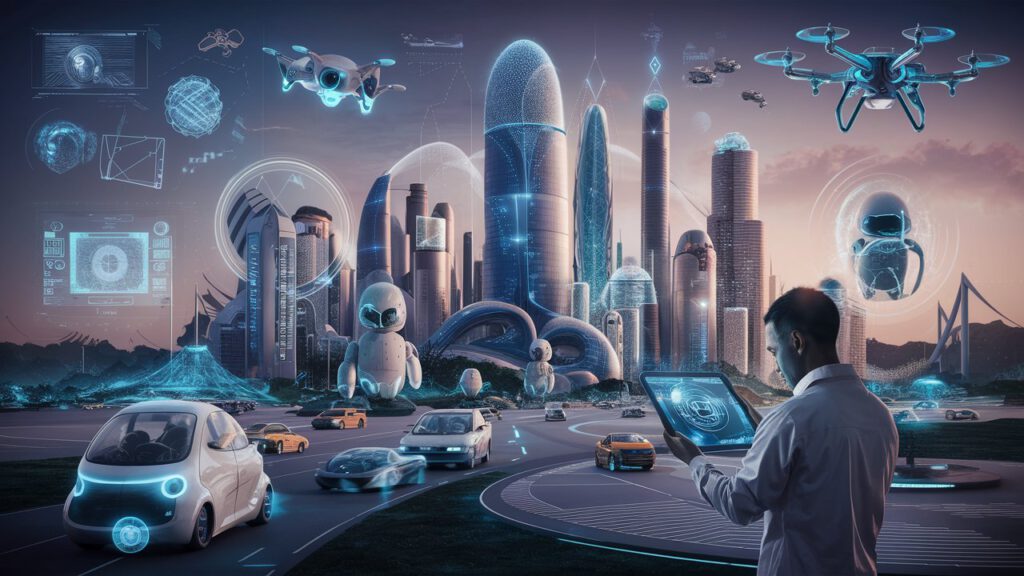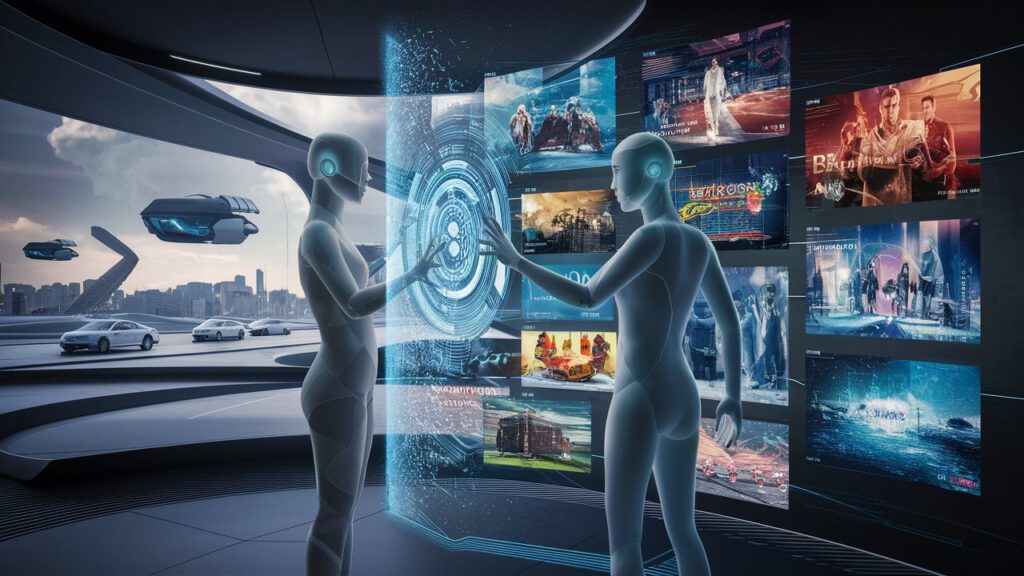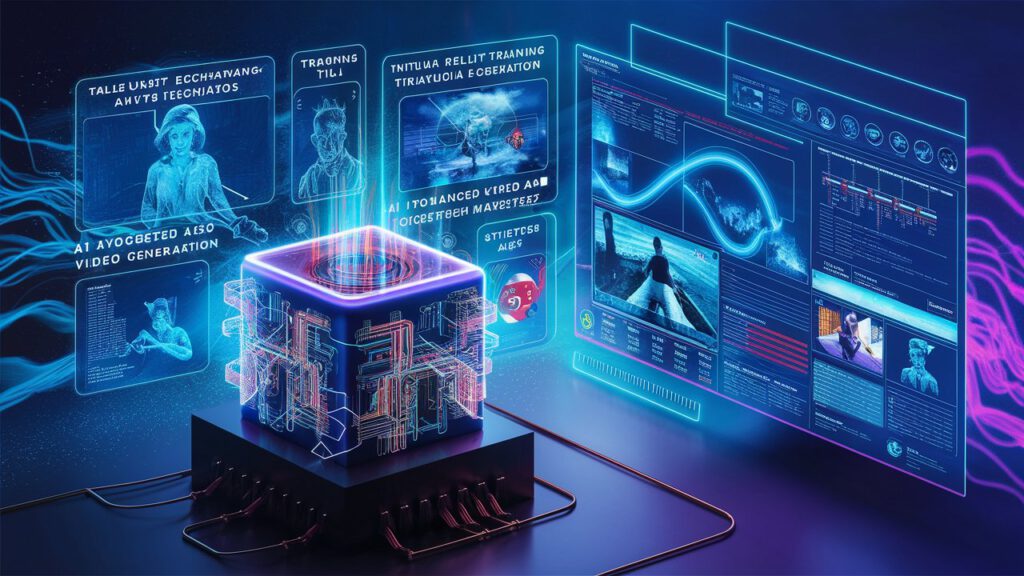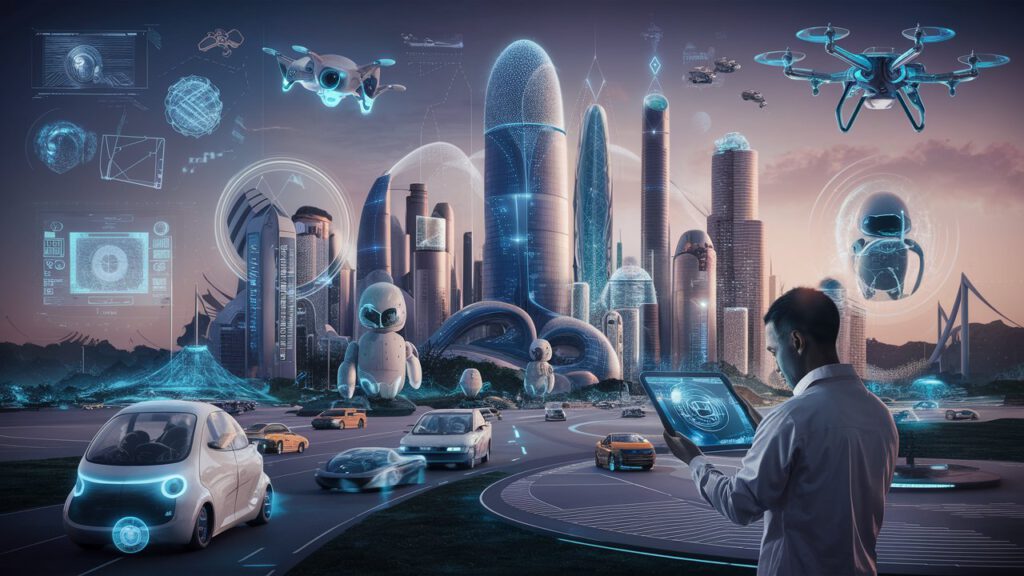Table of Contents

Sora AI is changing how we think about video creation. It’s an exciting new technology from OpenAI. As it develops, we can expect to see many new trends. Let’s explore the future of AI video generation.
1. Longer and More Complex Videos
Right now, It can make short videos. In the future, we might see:
– Videos that last several minutes or even hours
– More complex storylines and plots
– Better continuity between scenes
This could open up new possibilities for filmmaking and storytelling.
2. Improved Realism
It’s videos already look impressive. But they will likely get even better:
– More realistic human movements and expressions
– Better physics simulations (how objects move and interact)
– More accurate lighting and shadows
These improvements will make AI-generated videos harder to distinguish from real footage.
3. Audio Integration
Currently, It creates silent videos. In the future, we might see:
– AI-generated speech for characters
– Background music and sound effects
– Lip-syncing for speaking characters
This would make Sora videos more complete and engaging.
4. Style Customization
It might offer more control over video style:
– Options for different art styles (like cartoon or realistic)
– Filters and colour grading tools
– Ability to mimic specific directors’ styles
This would give users more creative control.
5. Interactive Videos
AI could enable new types of interactive content:
– Videos that change based on viewer choices
– Personalized videos that adapt to the viewer
– Virtual reality (VR) experiences generated by AI
This could revolutionize entertainment and education.
6. Real-Time Video Generation

Future versions of Sora might work faster:
– Instant video creation from text prompts
– Live video generation for streaming
– Quick edits and changes to existing videos
This speed could be useful for news, social media, and live events.
7. Multi-Language Support
It will likely expand its language capabilities:
– Creating videos based on prompts in many languages
– Generating dialogue in multiple languages
– Adapting visual elements for different cultures
This would make Sora useful for global content creation.
8. Integration with Other AI Tools
It might work together with other AI systems:
– Using AI-generated scripts as input
– Combining with AI image generators for more detailed scenes
– Working with AI voice generators for character speech
This could create a more comprehensive AI content creation suite.
9. Improved User Interface
As It develops, it might become easier to use:
– A more user-friendly interface for non-experts
– Visual tools for scene composition
– Templates for common video types
This would make AI video creation accessible to more people.
10. Enhanced Character Creation
Future versions of Sora might offer better character options:
– More diverse and realistic-looking characters
– Consistent characters across multiple videos
– Better character animations and expressions
This would be useful for creating series or recurring characters.
11. Better Scene Understanding
It will likely get better at understanding complex scenes:
– More accurate depiction of specific locations
– Better handling of multiple characters interacting
– More coherent action sequences
This would allow for more sophisticated storytelling.
12. Ethical and Copyright Considerations

As It becomes more powerful, we’ll likely see:
– Built-in tools to prevent misuse (like creating fake news)
– Options to respect copyright and trademark
– Clear labelling of AI-generated content
These features would help address ethical concerns.
13. Industry-Specific Versions
We might see versions of Sora tailored for different industries:
– A version for educators to create learning videos
– Tools for marketers to make ads quickly
– Features for game developers to create cut-scenes
sThis specialization could make Sora more useful in various fields.
14. Improved Prompt Understanding
Sora will likely get better at understanding what users want:
– Ability to understand more complex and nuanced prompts
– Better interpretation of abstract concepts
– Suggestions to improve unclear prompts
This would make it easier to get the desired results.
15. 3D and VR Content Creation
Future versions of Sora might expand beyond 2D video:
– Creating 3D environments and characters
– Generating virtual reality experiences
– Making augmented reality (AR) content
This could open up new possibilities in gaming and immersive media.
16. Integration with Traditional Video Tools
Sora might work alongside traditional video software:
– Plugins for popular video editing programs
– Tools to blend AI-generated and real footage
– Features to enhance existing videos
This would help Sora fit into existing workflows.
17. Customizable AI Models
Users might be able to train Sora on specific styles:
– Training on a company’s brand style
– Learning an individual creator’s techniques
– Specializing in particular genres or types of content
This would make Sora more flexible for different needs.
18. Improved Continuity and Storytelling

Sora will likely get better at creating coherent narratives:
– Better consistency in character appearance and behavior
– More logical progression of events in longer videos
– Improved pacing and timing in storytelling
This would make AI-generated videos more engaging.
19. Real-World Data Integration
Sora might incorporate real-world information:
– Using current events to create timely content
– Incorporating real locations accurately
– Reflecting seasonal changes in generated scenes
This would make AI videos more relevant and up-to-date.
20. Collaborative Features
Future versions might allow multiple users to work together:
– Shared projects for team video creation
– Version control for different edits
– Comments and feedback tools within the platform.
This would make Sora useful for larger productions.
Frequently Asked Questions
Q1: When will these future features be available in Sora?
A1: It’s hard to say exactly. AI technology develops quickly, but some features might take years to perfect.
Q2: Will future versions of Sora be able to edit existing videos?
A2: This is a possibility, but it’s not certain. It would be a significant new feature.
Q3: How will Sora impact the job market for video professionals?
A3: It might change some roles, but will likely also create new job opportunities related to AI video production.
Q4: Will Sora be able to create full-length movies in the future?
A4: While possible, creating coherent full-length movies would be very challenging and is likely a long way off.
Q5: Will future Sora videos be indistinguishable from real footage?
A5: They might become very close, but there will likely always be some ways to identify AI-generated content.
Q6: How might Sora change social media in the future?
A6: It could lead to more personalised video content and change how influencers and brands create content.
Conclusion
The future of AI video generation with Sora looks exciting. We can expect more realistic, complex, and customizable videos. Sora will likely become faster, more user-friendly, and able to create a wider range of content.
However, these advancements will also bring challenges. We’ll need to think about ethics, copyright, and the impact on traditional video production. As Sora develops, it will be important to use this technology responsibly.
Overall, Sora and similar AI tools will change how we create and consume video content. They’ll open up new possibilities for creativity and storytelling. The key will be learning how to use these tools effectively while maintaining human creativity and ethical standards.

Rob Williams is a tech enthusiast and digital content creator with a passion for emerging technologies. With over five years of experience in the field of digital marketing and content production, Rob has been closely following the developments in AI and its applications in media creation. When not writing about the latest in AI, Alex enjoys experimenting with new digital tools and sharing insights with the online tech community.